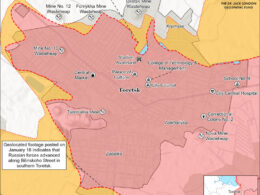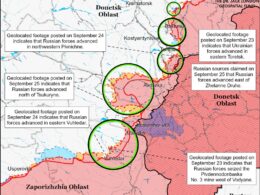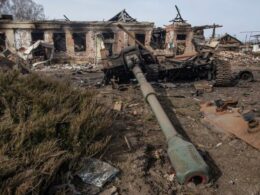Day 1079
On 5 February, there is much news from the Pokrovsk direction. Here, Russian forces face significant challenges in their assaults in their eastern flanking attempt around Pokrovsk due to stiff Ukrainian defenses, attempting to encircle the city with a massive mechanized assault. However, elite Ukrainian drone units ensured that no Russian vehicle could make it to Ukrainian lines, as Russians were caught out in the open with their Western flanking attempt stolen.
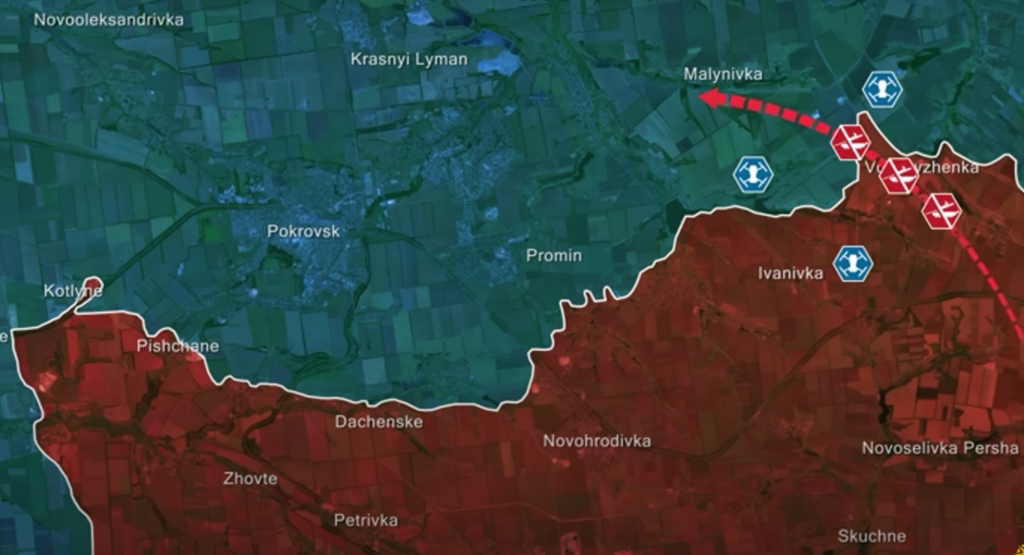
Russian commanders sought to bypass urban combat by pushing through the rural terrain near Vozdvyzhenka. Russians continued to try to avoid a prolonged urban battle, as Russians lacked the manpower and equipment to sustain heavy losses in house-to-house fighting. Afraid of Pokrovsk becoming a second Bakhmut, where months of grinding combat led to catastrophic Russian losses and a complete culmination of all frontline operations after taking the city, Russians prioritized a successful envelopment from the east that would allow to isolate Pokrovsk without engaging in bloody urban combat.
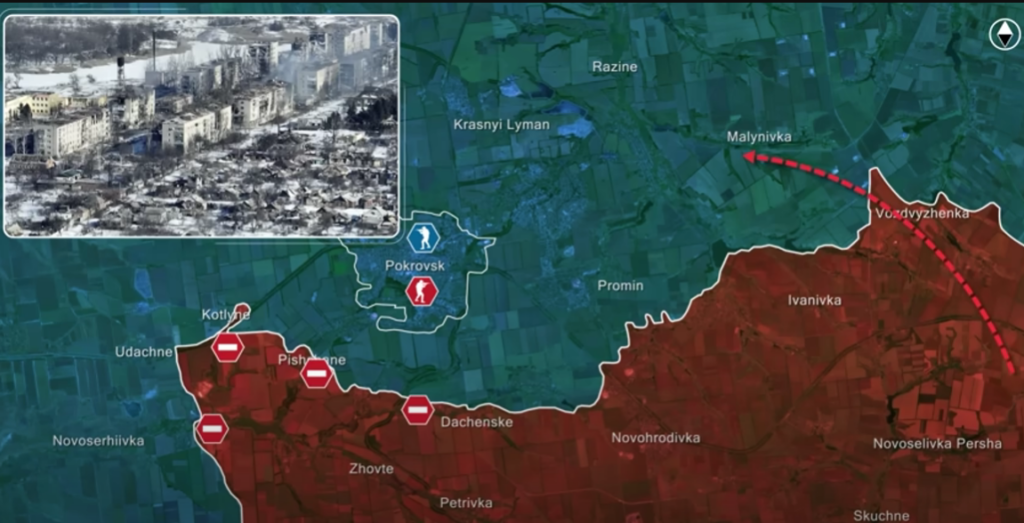
To execute this outflanking maneuver, Russian forces sought to push through a narrow corridor at Vozdvyzhenka using overwhelming mechanized firepower. Recent railway repairs to Ocheretyne allowed them to bring in larger quantities of armored vehicles closer to the front, eliminating the need for lengthy and vulnerable transport and allowing them to concentrate their armor.
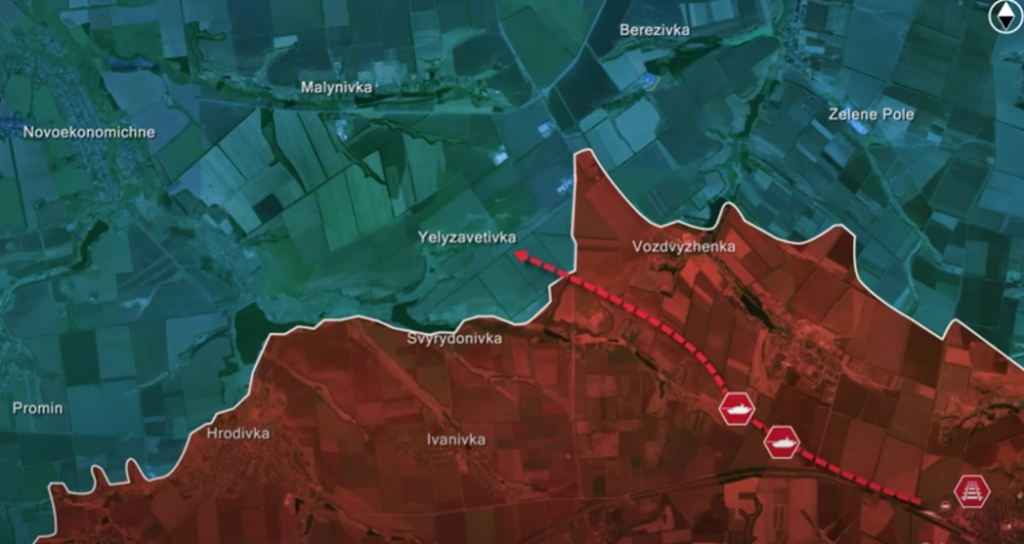
Despite this, if we look at the topographic map, we can see that Russian forces faced serious terrain disadvantages. The landscape east of Pokrovsk is unfavorable for armored assault, as the Russians were limited to two options to advance: one on the high ground, where it was less muddy, and one on the road in Vozdvyzhenka. These choke points restricted their movement, forcing Russian units into predictable paths and making them easy-to-spot targets for Ukrainian artillery and drones. Additionally, the terrain leading up to Ukrainian positions once they pass this choke point is open and exposed, offering no cover for advancing Russian troops.
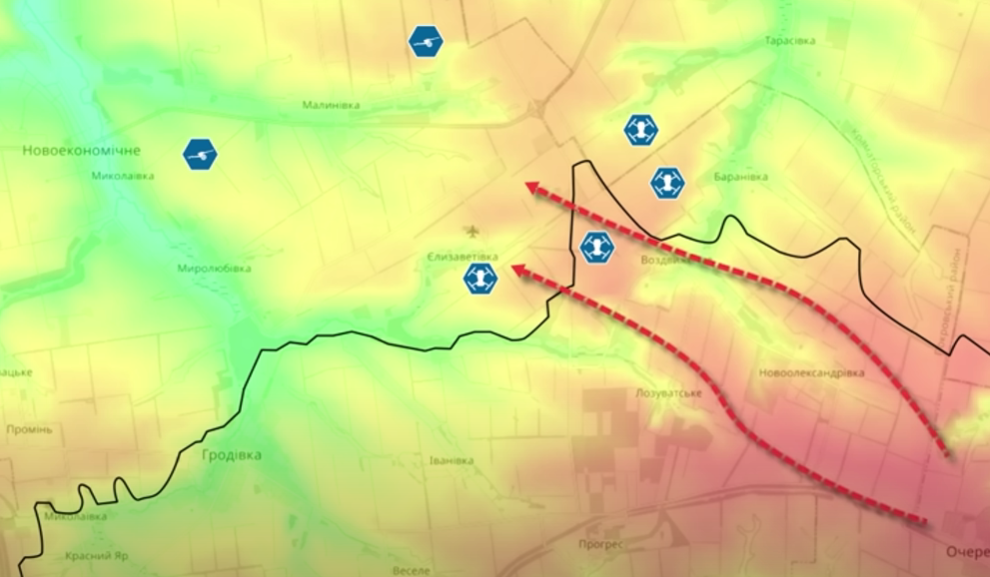
Ukrainian strongholds, particularly near the key underpass, are positioned to provide overlapping fields of fire. This geographical setup created a deadly kill zone where Russian armored columns became an easy target. Ukraine’s defenders were well prepared to counter the Russian assault thanks to intelligence from aerial reconnaissance and drone units. They anticipated the attack and positioned artillery and FPV drone teams accordingly.
Ukrainian forces fired on the advancing Russian column from three directions, completely cutting them down before they could reach Ukrainian lines.
One of the most effective units in this engagement was Magura Birds, one of Ukraine’s most elite drone regiments. Their drone operators have been instrumental in recent battles, and their Relentless attacks aimed at no Russian mechanized unit surviving long enough to reach Ukrainian lines.
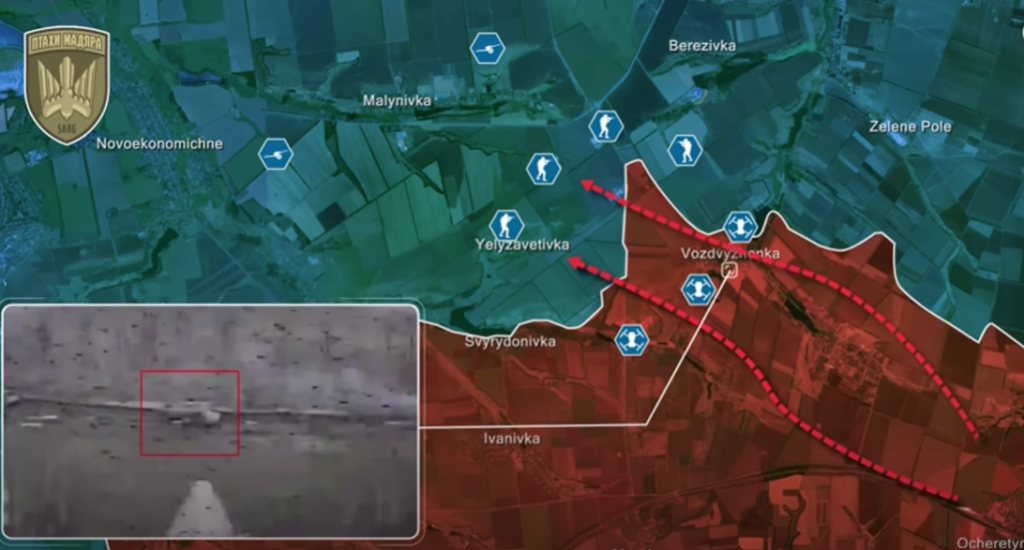
The peak of the Russian push occurred near Yelyzavetivka, where they launched a desperate mechanized attack. The assault began with the Russian tank attempting to clear the way, only to be destroyed before making any progress. Following this, nine more Russian vehicles moved out from Vozdvyzhenka, of which six were immediately eliminated, and the remaining three were heavily damaged as they tried to retreat. Not a single Russian vehicle reached the Ukrainian positions. Additionally, Russian infantry attempting to advance on foot were also cut down.
The aftermath of the failed Russian offensives is clearly visible in Vozdvyzhenka, where drone footage shows a landscape littered with burnt-out Russian vehicles, with their sheer number highlighting the futility of their approach. Among the wreckage are so-called Frankenstein Vehicles, makeshift armored carriers cobbled together from salvaged parts. These desperate improvisations underscore Russia’s logistical struggles and continued inability to combat the Ukrainian drone threat.
Overall, Russia’s attempt to outflank Pokrovsk has resulted in heavy losses, with Ukrainian forces once again proving their ability to repel large-scale mechanized attacks. The geography, Ukrainian tactical positioning, and the devastating effectiveness of Magura Birds ensured that Russian forces were completely cut off and annihilated.
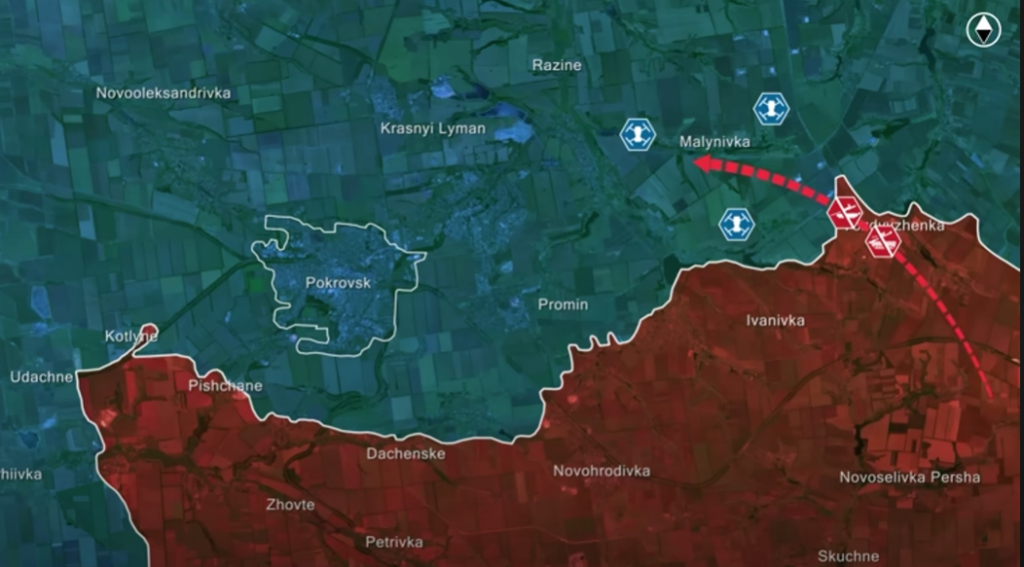
The unit’s record speaks for itself, with 4,387 Russian targets destroyed in January alone, among them nearly 100 tanks, hundreds of armored vehicles, and more than a thousand enemy soldiers.
Despite Russian logistical improvements, Russia’s inability to execute successful assaults in open terrain leaves it at a severe disadvantage. If it continues down this path, its offensive risks becoming yet another catastrophic failure.
In our daily frontline report, we pair up with the military blogger Reporting from Ukraine to keep you informed about what is happening on the battlefield in the Russo-Ukrainian war.
Read also:
- Frontline report: Russian four-man units face infrastructure challenge at Pokrovsk
- Frontline report: Russian tanks trapped in Kursk as dragon’s teeth bite back
- Frontline report: Ukrainian counterattack exposes Russian vulnerabilities near Pokrovsk
- Frontline report: Russians lose 400-km radar in Ukrainian drone strike spree


